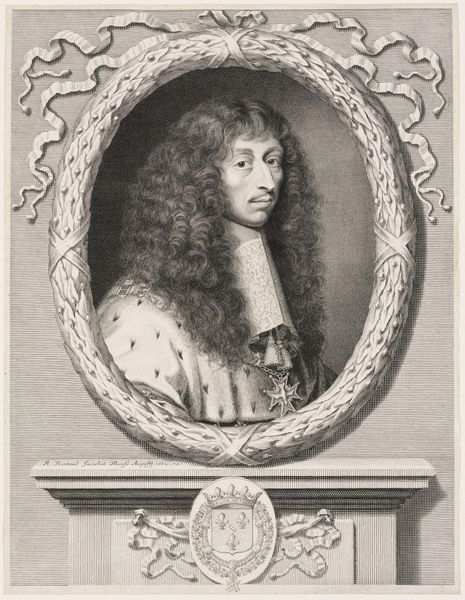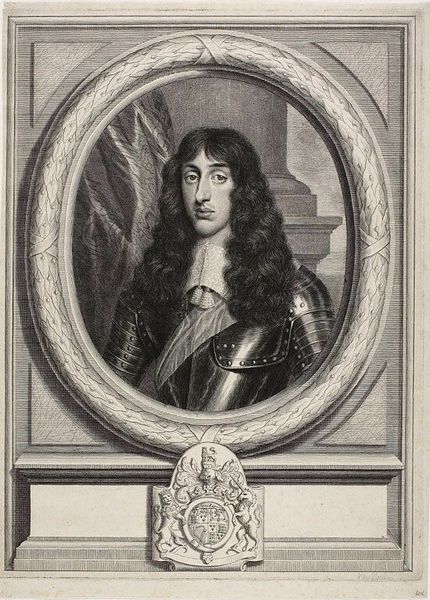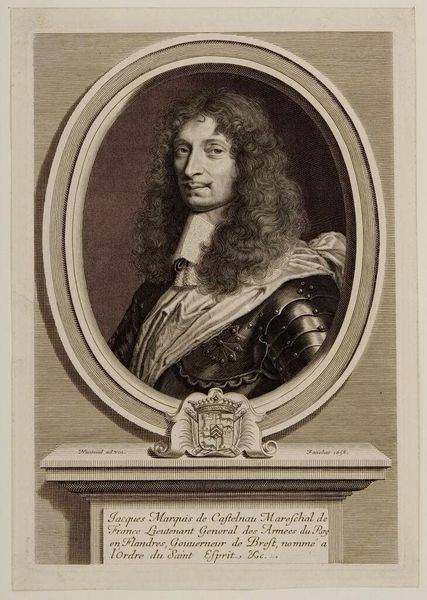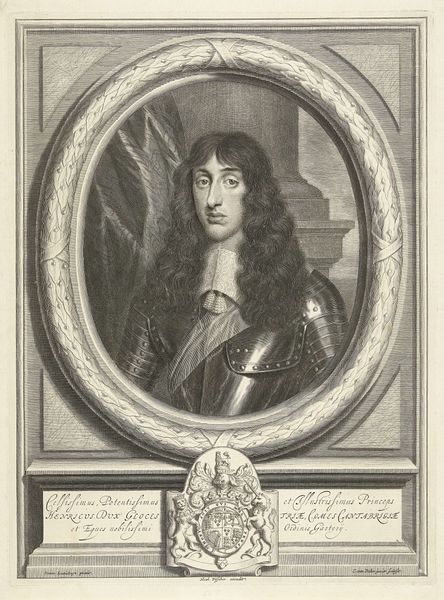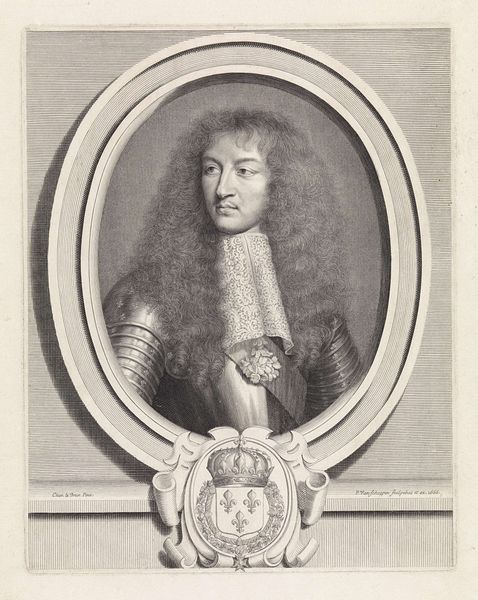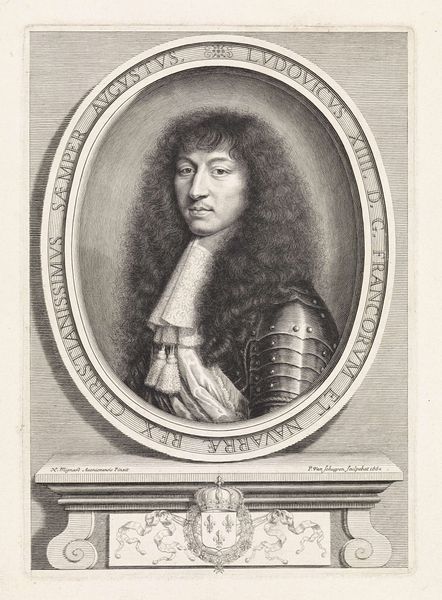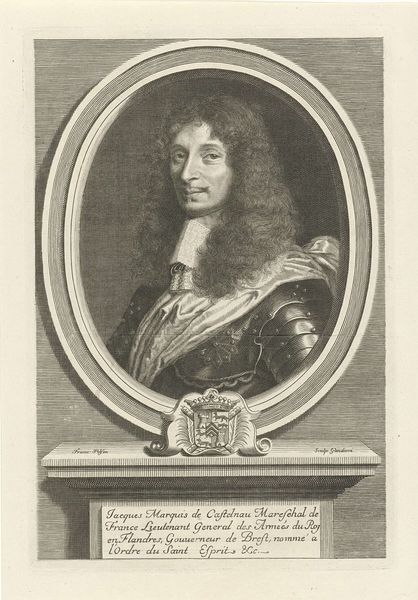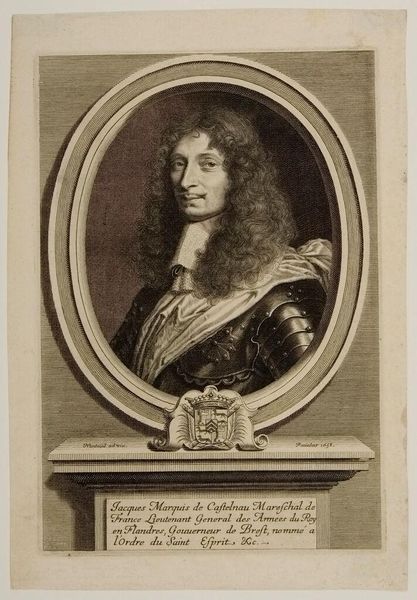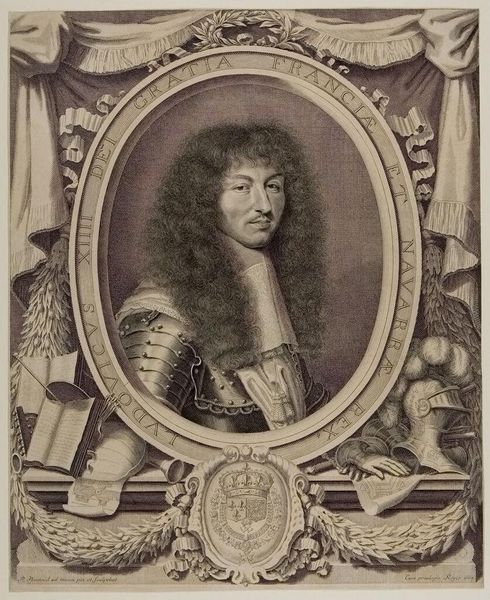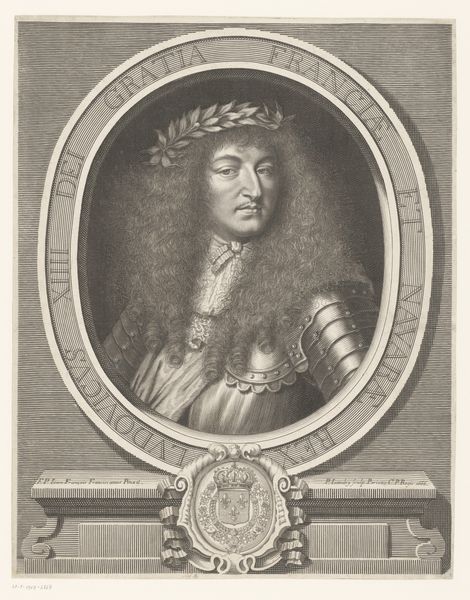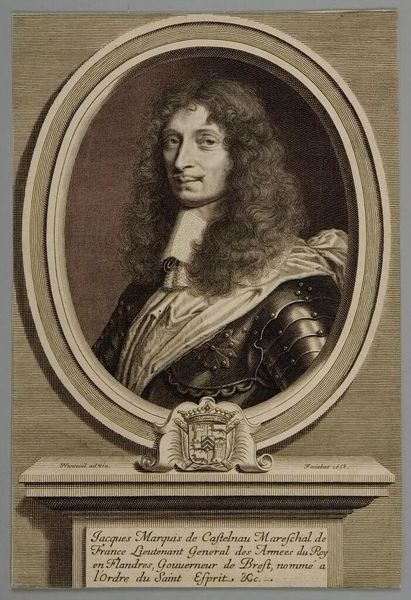
print, engraving
#
portrait
#
baroque
# print
#
history-painting
#
engraving
Dimensions: height 356 mm, width 282 mm
Copyright: Rijks Museum: Open Domain
Curator: Pieter van Schuppen created this engraving between 1660 and 1667, titled "Portret van Filips I, hertog van Orléans." It's part of the Rijksmuseum collection. Editor: It’s arresting, isn't it? Even though it's rendered in monochrome, the subject's gaze seems so direct, almost confrontational. And that elaborate frame practically overflows with baroque sensibilities. Curator: Indeed. That frame serves as more than mere decoration. Wreaths and ribbons often symbolize triumph and honor, especially when surrounding a royal portrait. It really sets a specific mood. Editor: It’s also the very embodiment of conspicuous consumption. All of that lush drapery, expensive lace… and the fleur-de-lis heraldry displayed quite prominently at the bottom. This wasn't meant to be subtle. It’s an aggressive performance of power and prestige. Curator: The sitter, of course, is Philippe I, Duke of Orléans, younger brother of Louis XIV. This portrait reflects his position in the French court. Symbols related to lineage and legacy become extensions of the self. Look at the wig, the precise waves cascade like a kingly mane. What emotional resonances did those artificial signifiers evoke then, and how do they influence us now? Editor: They signify exclusion. Think about the immense resources – economic, social, physical, that created and maintained those standards of beauty and power. While this image showcases a powerful person, its artifice performs and perpetuates inequality by normalizing this rigid hierarchy. Curator: You make a very powerful argument about performativity. It’s impossible to disconnect these kinds of images from their original context and purpose. Still, can't we appreciate, also, the symbolic language itself – the semiotics of power? Editor: Well, recognizing the craft shouldn't absolve us from interrogating the image’s effects. Curator: Absolutely. Seeing this artwork in its complexities allows us to not only examine our current value system, but also understand more deeply how the powerful leverage the symbolic systems of culture to reinforce existing social hierarchies. Editor: I completely agree. This exercise forces me to think about not only what it meant, but how it continues to mean today, and who benefits.
Comments
No comments
Be the first to comment and join the conversation on the ultimate creative platform.
